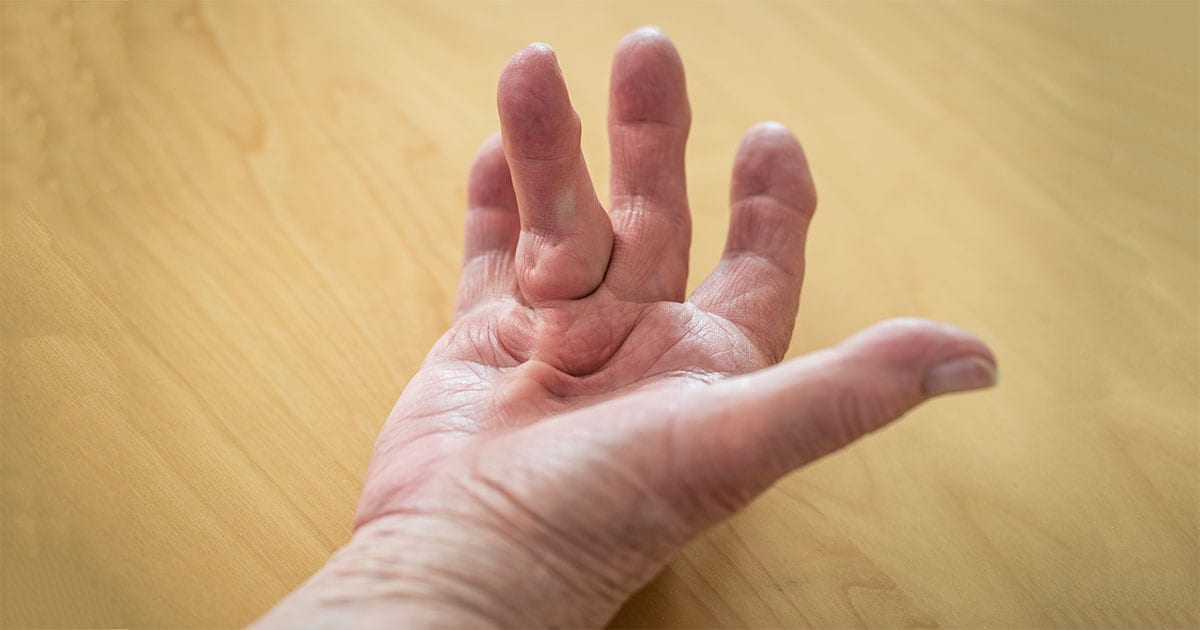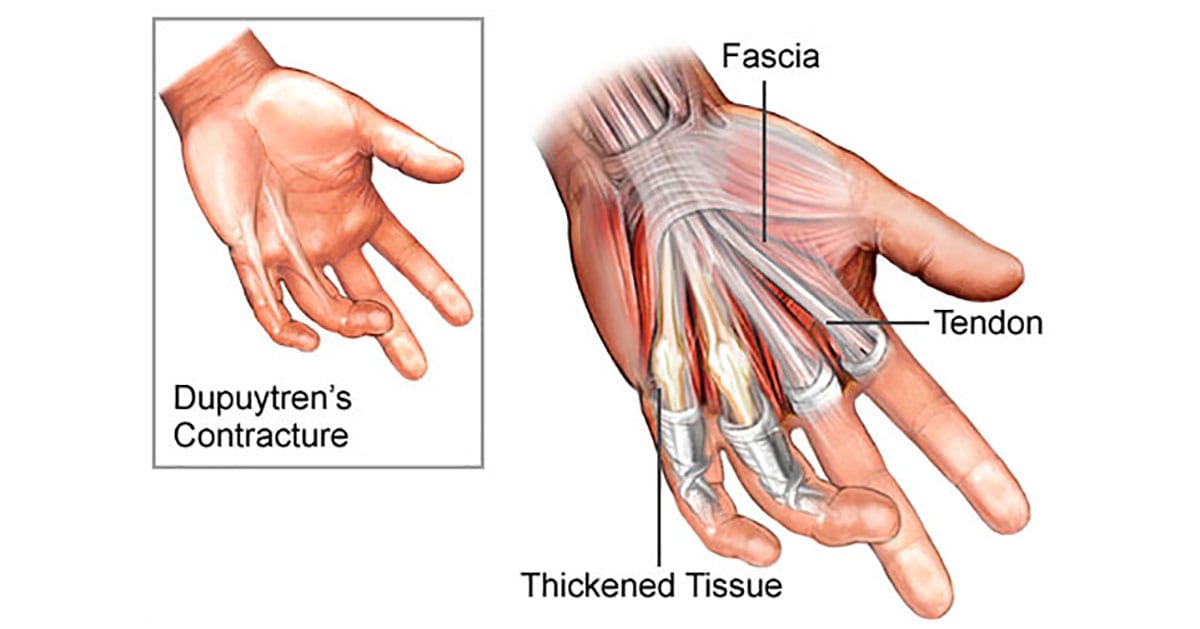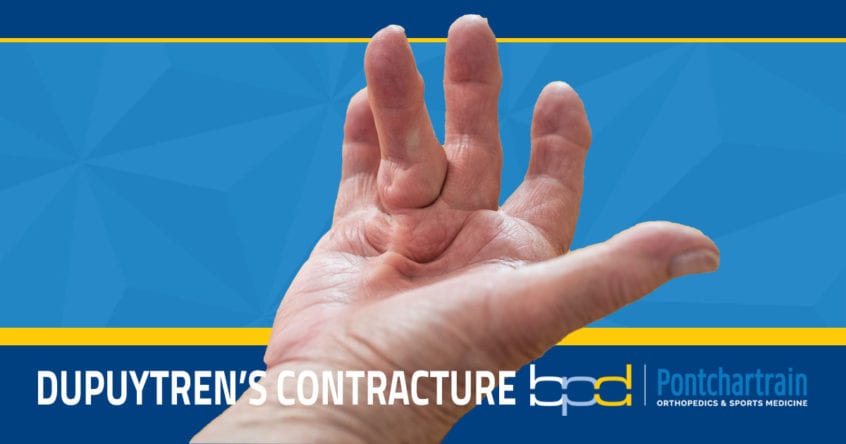
Understanding Dupuytren’s Contractures
Dupuytren's contractures may not be a common, household term, but for thousands of sufferers it is a serious, potentially crippling hand condition.
Commonly referred to as “Viking disease,” it’s believed Dupuytren's disease originated with, and was spread across Northern Europe, by marauding Vikings. Dupuytren's contracture is a shortening, thickening, and excessive growth of the normally flexible connective tissue (fibrosis) beneath the skin of the palm and fingers (palmar fascia). In today’s post, Dr. Donnelly explains this disfiguring and painful symptom of Dupuytren’s disease.
What are the symptoms of Dupuytren’s Contractures?
Many people don’t realize they have this unpleasant health issue until it has advanced significantly. Dupuytren’s disease causes excessive growth and tightening of the fibers of the palmar fascia which extends like ropes into the fingers. As the condition advances, these ropes tighten, or contract, causing the fingers to curl forward. As this curling worsens, it becomes difficult, if not impossible, to straighten the fingers. Other symptoms include:
Callus-like lump
Dupuytren's contractures tends to start with the development of one or more callus-like lumps (nodules) under the skin in the palm of the hand. The bumps are often unremarkable (save for some tenderness in the area), so many people assume they will eventually go away.
Clinched fingers
The pinkie and ring fingers are most often affected, appearing clenched. Both hands are usually involved, although one may have more severe symptoms than the other. As the fingers curl forward, you may find yourself unable to shake hands with coworkers, grip a golf club, or play an instrument.
Who gets it and why?
The cause of Duputren’s disease is unknown, however, specific biochemical factors that affect the connective tissue may be involved. Men over the age of 40 tend to be the most at risk of developing Dupuytren’s contractures. The condition usually runs in families of Northern European and Scandinavian descent. However, it can affect people of any age and background.

"The condition usually runs in families of Northern European and Scandinavian descent. "Brandon P. Donnelly, MD
How is it treated?
Though the direct cause of Dupuytren's is currently unknown, medical professionals believe that genetics, gender, and age play a factor in the likelihood of dealing with it. Currently, there is no cure for the condition. However, there are treatments to help manage the symptoms:
Steroid injections
This treatment helps the sufferer deal with inflammation and the pain that comes with it.
Enzyme injections
Enzyme injections into the taut cord in your palm can soften and weaken the tissue. This gives the doctor an opportunity to break-up the cord and return the fingers to a more natural position.
Needle aponeurotomy
In this technique, the objective is to break-up the affected cord of tissue with a needle. It’s a simple procedure that can be performed in the doctor’s office. However, it may not be an appropriate option for tissue close to certain nerves or tendons.
Surgery
Patients with advanced Duputren’s contractures may require surgery to remove all tissue susceptible to Dupuytren's contracture, including the skin. This option lasts longer than needling or enzyme injections. However, it is the most invasive option, may require a skin graft, and intensive physical therapy as part of the recovery.
"A lump on the palm of your hand may seem harmless, but it could be an early indication of Dupuytren's disease. "Brandon P. Donnelly, MD
Get a proper diagnosis
A lump on the palm of your hand may seem harmless, but it could be an early indication of Dupuytren's disease. While you may be related to the Vikings, don’t try to tough it out. You could have Dupuytren's contracture.
If your finger is starting to curl or you found a lump on your hand, contact Dr. Donnelly’s office to schedule an appointment today. Early intervention is the key to maintaining your quality of life.
This site is not intended to and does not provide medical advice, professional diagnosis, opinion, treatment or services to you or to any other individual. Through this website and links to other websites, Brandon P. Donnelly, MD provides general information for educational purposes only. The content provided in this website and links, is not a substitute for medical care or treatment. You should not use this information in place of a consultation or the advice of your healthcare provider. Brandon P. Donnelly, MD is not liable or responsible for any advice, course of treatment, diagnosis or any other information, services or product you obtain through this site.

